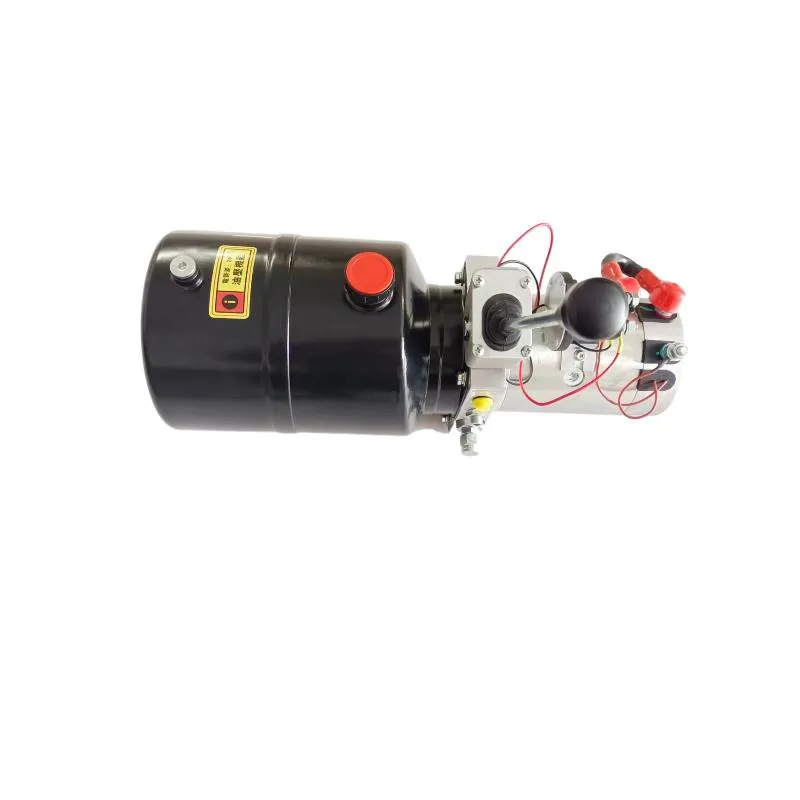Nov . 24, 2024 01:51 Back to list
making hydraulic cylinder product
Making a Hydraulic Cylinder An In-Depth Guide
Hydraulic cylinders are crucial components in various machines and equipment, providing the necessary force to perform heavy lifting and other tasks. Whether in construction, manufacturing, or automotive applications, hydraulic cylinders are designed to convert hydraulic energy into linear motion. This article outlines the key steps and considerations in making a hydraulic cylinder, ensuring it operates efficiently and reliably.
Understanding Hydraulic Cylinders
Before diving into the construction, it's essential to understand the working principles of a hydraulic cylinder. At its core, a hydraulic cylinder consists of a barrel, piston, and end caps. When hydraulic fluid is pumped into the cylinder, it creates pressure that pushes the piston, resulting in linear movement. The efficiency of this process depends on the proper design and materials used in constructing the cylinder.
Step 1 Designing the Hydraulic Cylinder
The first step in making a hydraulic cylinder is to create a detailed design. This involves determining the cylinder's size, stroke length, and application requirements. The design should account for factors such as the maximum operating pressure, the type of hydraulic fluid used, and the environmental conditions the cylinder will face.
Utilizing CAD (Computer-Aided Design) software can significantly enhance the design process, allowing for precise measurements and simulations. This digital modeling helps identify potential issues before manufacturing and ensures the final product meets the necessary specifications.
Step 2 Selecting Materials
The choice of materials is critical for ensuring the cylinder's durability and performance. Common materials used in manufacturing hydraulic cylinders include high-strength steel, aluminum, and composite materials. Steel is often used for its superior strength and durability, making it ideal for high-pressure applications. On the other hand, aluminum is lightweight, which can be beneficial in reducing the overall weight of the machine.
It is also essential to consider the seals and gaskets, as they prevent hydraulic fluid leaks. Materials such as rubber and polyurethane are commonly used due to their resilience and ability to withstand high pressures.
Step 3 Manufacturing the Components
Once the design and materials are determined, the manufacturing process begins. This involves several steps, including
making hydraulic cylinder product

- Machining the Barrel The barrel is usually cylindrical, and precision machining is required to achieve the correct dimensions and surface finish. This ensures a tight fit with the piston and minimizes wear over time. - Fabrication of the Piston The piston should be designed to fit snugly within the barrel while allowing smooth movement. Machining the piston to the correct tolerances is crucial for optimal performance.
- End Cap Production The end caps seal the cylinder and house the hydraulic connections. They must be equally robust to withstand the pressure inside the cylinder.
Step 4 Assembly
After manufacturing all components, the assembly process begins. This can involve several steps
1. Inserting Seals and Gaskets Before assembly, it's vital to insert high-quality seals to prevent leaks. Proper lubrication of the seals can enhance their longevity.
2. Connecting the Piston and Rod The piston is attached to a rod that extends out of the cylinder. Proper alignment is essential to prevent bending or binding during operation.
3. Securing the End Caps Finally, the end caps are secured to the cylinder, ensuring they are tightly sealed to withstand internal pressure.
Step 5 Testing and Quality Control
Once assembly is complete, rigorous testing is essential. The hydraulic cylinder should undergo pressure testing to identify any leaks and ensure it can handle the specified pressures. Moreover, performance testing can help assess the cylinder's efficiency and responsiveness.
Conclusion
Making a hydraulic cylinder requires careful planning, the right materials, and precise manufacturing processes. By understanding the intricacies involved in the design and production, manufacturers can create high-quality hydraulic cylinders that deliver reliable performance in a variety of applications. Proper testing and quality control will ultimately ensure that the hydraulic cylinders meet industry standards, making them a vital part of modern machinery and equipment.
-
Fork Lift Power Units - Hebei Shenghan | Efficiency, Reliability
NewsJul.13,2025
-
1.5-Ton Turbocharged Cylinder-Hebei Shenghan|Hydraulic Solution,Energy Efficiency
NewsJul.13,2025
-
Auto Hoist Power Units-Hebei Shenghan|Efficiency&Industrial Lifting
NewsJul.13,2025
-
Double Acting Power Units-Hebei Shenghan|Hydraulic Solutions,Industrial Efficiency
NewsJul.13,2025
-
1.5 Ton Lifting Cylinder 70/82-40-290-535 - High-Performance Hydraulic Solution | Hebei Shenghan
NewsJul.13,2025
-
Fork Lift Power Units - Hebei Shenghan | Efficiency&Reliability
NewsJul.13,2025
